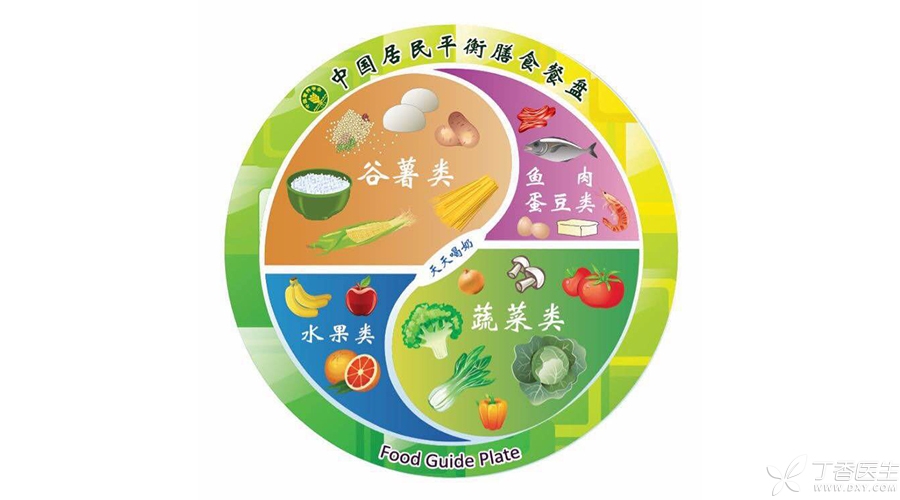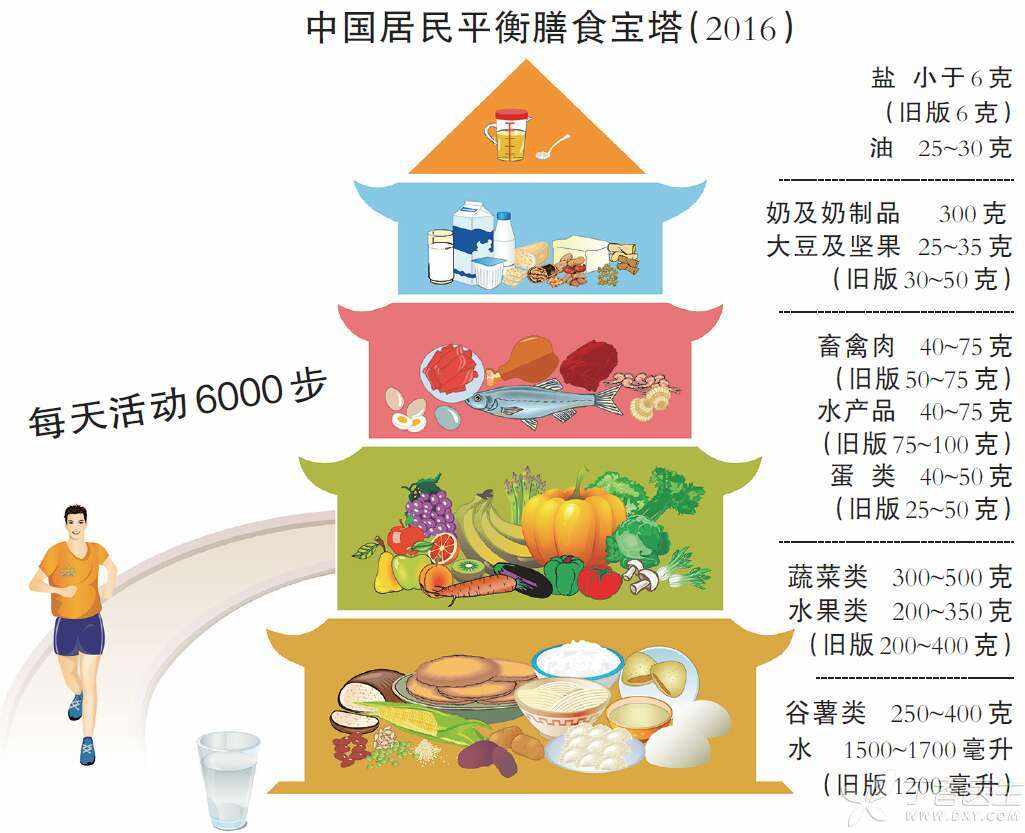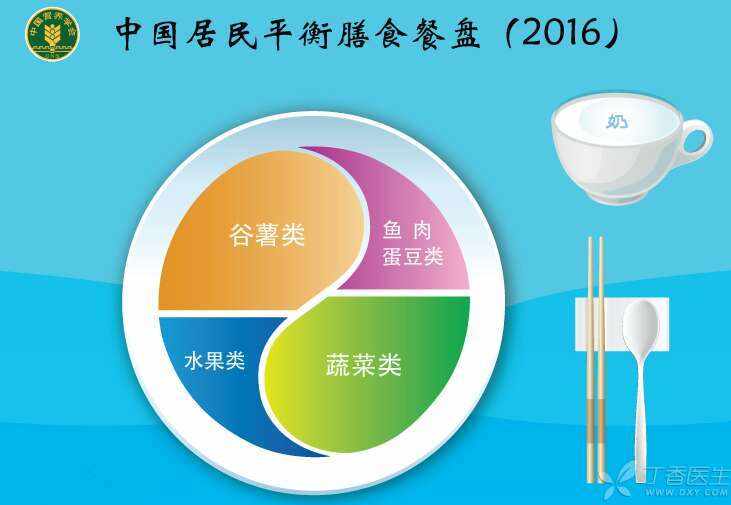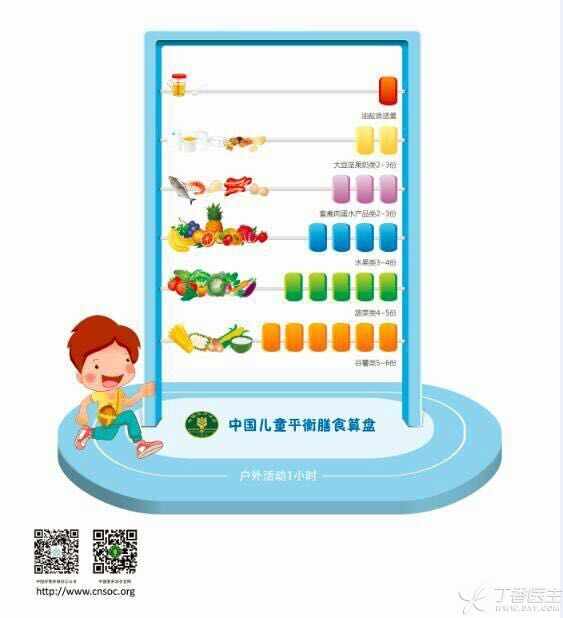
The 2016 edition of < < Dietary Guidelines for Chinese Residents > > has been released with great enthusiasm!
Compared with the 2007 edition of the guide, the core recommendations for the general population are more concise and concentrated, from 10 to 6, each with eight characters, with prominent emphasis and convenient memory.
We will make a quick interpretation of the new and old versions of the guide to see how to eat it in the future so as to be more nutritious and healthy.
Core Recommendations of 2016 Dietary Guidelines
First, there are various foods, mainly cereals.
Second, eat dynamic balance, healthy weight
Three, eat more fruits and vegetables, milk, soybean
Four, suitable to eat fish, poultry, eggs, lean meat
Five, less salt, less oil, sugar control and alcohol limit
Six, put an end to waste, promote new food is still
First, there are various foods, mainly cereals.
- Daily diet should include cereals and potatoes, vegetables and fruits, livestock and poultry, fish, eggs, milk, soybean nuts and other foods. On average, more than 12 kinds of foods are consumed every day, and more than 25 kinds are consumed every week. Daily intake of cereals and potatoes is 250-400g, of which whole grains and miscellaneous beans are 50-150g, and potatoes are 50-100g. Diverse foods, and cereals are the main features of a balanced diet pattern.
Interpretation of [Food Diversity]
Edition 2007: A balanced diet must consist of a variety of foods.
Edition 2016: An average of at least 12 kinds of food per day and at least 25 kinds per week.
It can be seen that the 2016 edition quantifies whether what is [food diversity], giving people a goal when choosing a variety of foods.
Interpretation of [Grain-based]
2007 Edition: The average adult eats 250-400 grams of cereal every day, and it is best to eat 50-100 grams of whole cereal. Pay attention to increasing potato intake.
Edition 2016: 250-400g of cereals are consumed every day, including 50-150g of whole grains and miscellaneous beans and 50-100g of potatoes.
In addition to whole grain foods, special emphasis should be placed on the intake of miscellaneous beans (red beans, mung beans, kidney beans, chickpeas and other non-soybean beans); The transfer of potato food from [vegetables, fruits and potatoes] to the category of staple food has significantly increased the recommended intake of whole grains, miscellaneous beans and potatoes.
Second, eat dynamic balance, healthy weight
- People of all ages should exercise every day to maintain a healthy weight. Do not overeat, control total energy intake and maintain energy balance. Adhere to daily physical activities, at least 5 days of moderate intensity physical activities per week, totaling more than 150 minutes; Active physical activity is best at 6,000 steps per day. Reduce sedentary time and get up and move every hour.
Interpretation of [Active Physical Activity]
2007 Edition: Adults are advised to take physical activities equivalent to walking more than 6,000 steps a day, preferably 30 minutes of moderate intensity exercise.
Edition 2016: Adhere to daily physical activities and carry out moderate intensity physical activities at least 5 days a week for a total of more than 150 minutes; Active physical activity is best 6000 steps per day.
The 6,000 steps per day are emphasized as [active physical activity] from the original [physical activity], that is to say, [turning over in bed] this casual physical activity cannot be confused, it must be that we take the initiative to carry out more than 6,000 steps.
Interpretation of [Moderate Intensity Exercise]
Exercise that can reach 60% ~ 70% of the maximum heart rate (220 minus age). For example, when you are 30 years old, your heart rate reaches (220-30) × 0.6 to 0.7 after participating in an exercise, that is, 114 ~ 133 times, which can be regarded as moderate intensity exercise.
Three, eat more fruits and vegetables, milk, soybean
- Vegetables and fruits are an important part of a balanced diet, Milk is rich in calcium, soybean is rich in high-quality protein. Meal has vegetables, ensure daily intake of 300 ~ 500 grams of vegetables, dark vegetables should account for 1/2. Eat fruits every day, ensure daily intake of 200 ~ 350 grams of fresh fruits, fruit juice cannot replace fresh fruits. Eat all kinds of dairy products, equivalent to 300 grams of liquid milk every day. Eat bean products often, eat nuts in an appropriate amount.
Interpretation [Eating Fruit Every Day]
2007 edition: 200 ~ 400g fruit.
Edition 2016: Eat fruits every day to ensure that 200 ~ 350 grams of fresh fruits are consumed every day. Juice cannot replace fresh fruits.
The recommended daily intake of fruits dropped by 50 grams and stressed that fruit juice cannot replace fruits. This is consistent with the World Health Organization’s restriction on sugar addition.
Interpretation [Eat Nuts in Appropriate Amount]
2007 Edition: It is recommended to take 30 ~ 50g of soybean or the same amount of bean products every day. Appropriate amount of nuts, 50g per week is appropriate.
Edition 2016: Eat bean products regularly and nuts in an appropriate amount. Soybeans and nuts are recommended to be 25 ~ 35g per day.
Nuts are snacks in the 2007 edition, and are combined with soy foods in the 2016 edition. At the same time, the recommended intake has also decreased, adding up to 25-35g per day. Why are soybeans frequent and nuts moderate? Because nuts have higher oil content and energy content. Considering that the total energy recommended for daily intake has obviously decreased, when choosing nuts, we must choose nuts with higher health value and grasp the good quantity.
Four, suitable to eat fish, poultry, eggs, lean meat
- The intake of fish, poultry, eggs and lean meat should be moderate. Eat 280-525 grams of fish, 280-525 grams of livestock and poultry meat and 280-350 grams of eggs every week, with an average daily intake of 120-200 grams. Preference should be given to fish and poultry. Eat eggs without abandoning egg yolk. Eat less fat meat, smoked and pickled meat products.
Interpretation of [Recommended Animal Food in Weeks]
Edition 2007: It is recommended to eat 75-100g of fish and shrimp, 50-75g of livestock and poultry meat and 25-50g of eggs every day.
The main consideration is that it is not easy to eat all livestock, poultry, fish and aquatic products in one day. Therefore, if you eat poultry meat today, you’d better replace it with aquatic products tomorrow.
If animal food is converted to daily, it is roughly 40-75g of livestock and poultry meat, 40-75g of aquatic products and 40-50g of eggs.
Interpretation [Eating Eggs Without Discarding Egg Yolk]
In addition, the new study believes that the cholesterol in egg yolk (including other foods) has limited influence on the blood cholesterol of healthy people. Considering that egg yolk contains more than half of the nutrients in eggs, the new dietary guidelines place special emphasis on not abandoning egg yolk when eating eggs.
Five, less salt, less oil, sugar control and alcohol limit
- Cultivate light eating habits and eat less high salt and fried foods. Adults eat no more than 6g of salt and 25-30g of cooking oil every day. Control the intake of added sugar, no more than 50g per day, preferably less than 25g. Daily intake of trans fatty acids should not exceed 2g. Drink enough water, adults 7-8 cups (1500-1700 ml) per day, and advocate drinking plain boiled water and tea. Do not drink or drink less sugary drinks. Children, adolescents, pregnant women and lactating mothers should not drink alcohol. If adults drink alcohol, the amount of alcohol consumed by men and women should not exceed 25g and 15g per day.
Interpretation of [Controlling Addition of Sugar]
It is proposed to control the intake of added sugar, especially sweet drinks, fruit juice, various cakes, cooking sugar and hidden sugar in processed foods. Many foods do not taste sweet, but there are words such as sugar and high fructose syrup in the ingredient list, which is hidden sugar.
Six, put an end to waste, promote new food is still
- Cherish food, prepare meals according to needs, and advocate separate meals without waste. Choose fresh and sanitary food and appropriate cooking methods. Food preparation is separated from raw and cooked food, and cooked food should be heated thoroughly for the second time. Learn to read food labels and choose food reasonably. Go home to eat more, enjoy food and family ties. Inherit fine culture and promote new style of food civilization.
This suggestion is a major change in the 2016 edition of the Dietary Guidelines. Apart from the food itself, more emphasis is placed on food culture and social benefits.
Advocate eating fresh food and pay attention to food safety and hygiene; Increase how to reasonably select food through food labels; Advocating thrift and thrift and not wasting meals.
Three Magic Weapons of New Guide
1. Balanced Diet Pagoda for Chinese Residents (2016)

2. Balanced Meal Plate for Chinese Residents (2016)

3. Chinese Children’s Balanced Diet Abacus

The new edition of the guide will expand the suitable population.
The 2007 edition of Dietary Guidelines for the General Population: Applicable to people over 6 years old.
The 2016 edition of Dietary Guidelines for the General Population: Applicable to people over 2 years old.
Increase children aged 2-6 years old
The new edition of the Dietary Guidelines includes children aged 2-6 years old in the Dietary Guidelines for the General Population, so that parents can set an example by example, and at the same time help children to form correct dietary habits from an early age, and truly implement the concept of “food education” into every bit of life.
Increase the vegetarian population
In addition, in order to meet the health needs of the growing vegetarian population, the 2016 edition of the Dietary Guidelines has specially added dietary guidance for the [vegetarian] population.
